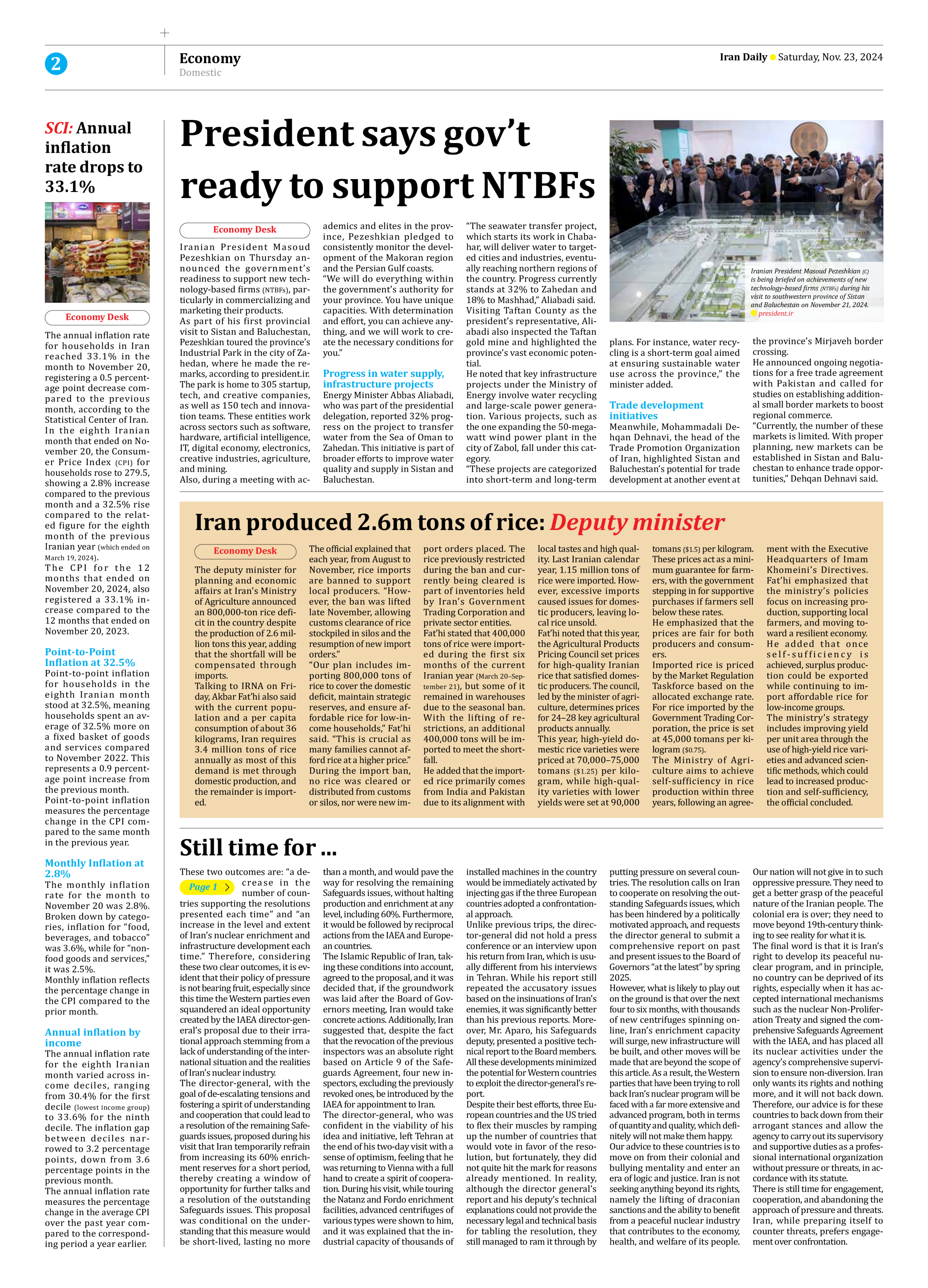
Iran produced 2.6m tons of rice: Deputy minister
The deputy minister for planning and economic affairs at Iran’s Ministry of Agriculture announced an 800,000-ton rice deficit in the country despite the production of 2.6 million tons this year, adding that the shortfall will be compensated through imports.
Talking to IRNA on Friday, Akbar Fat’hi also said with the current population and a per capita consumption of about 36 kilograms, Iran requires 3.4 million tons of rice annually as most of this demand is met through domestic production, and the remainder is imported.
The official explained that each year, from August to November, rice imports are banned to support local producers. “However, the ban was lifted late November, allowing customs clearance of rice stockpiled in silos and the resumption of new import orders.”
“Our plan includes importing 800,000 tons of rice to cover the domestic deficit, maintain strategic reserves, and ensure affordable rice for low-income households,” Fat’hi said. “This is crucial as many families cannot afford rice at a higher price.”
During the import ban, no rice was cleared or distributed from customs or silos, nor were new import orders placed. The rice previously restricted during the ban and currently being cleared is part of inventories held by Iran’s Government Trading Corporation and private sector entities.
Fat’hi stated that 400,000 tons of rice were imported during the first six months of the current Iranian year (March 20–September 21), but some of it remained in warehouses due to the seasonal ban. With the lifting of restrictions, an additional 400,000 tons will be imported to meet the shortfall.
He added that the imported rice primarily comes from India and Pakistan due to its alignment with local tastes and high quality. Last Iranian calendar year, 1.15 million tons of rice were imported. However, excessive imports caused issues for domestic producers, leaving local rice unsold.
Fat’hi noted that this year, the Agricultural Products Pricing Council set prices for high-quality Iranian rice that satisfied domestic producers. The council, led by the minister of agriculture, determines prices for 24–28 key agricultural products annually.
This year, high-yield domestic rice varieties were priced at 70,000–75,000 tomans ($1.25) per kilogram, while high-quality varieties with lower yields were set at 90,000 tomans ($1.5) per kilogram. These prices act as a minimum guarantee for farmers, with the government stepping in for supportive purchases if farmers sell below these rates.
He emphasized that the prices are fair for both producers and consumers.
Imported rice is priced by the Market Regulation Taskforce based on the allocated exchange rate. For rice imported by the Government Trading Corporation, the price is set at 45,000 tomans per kilogram ($0.75).
The Ministry of Agriculture aims to achieve self-sufficiency in rice production within three years, following an agreement with the Executive Headquarters of Imam Khomeini’s Directives. Fat’hi emphasized that the ministry’s policies focus on increasing production, supporting local farmers, and moving toward a resilient economy.
He added that once self-sufficiency is achieved, surplus production could be exported while continuing to import affordable rice for low-income groups.
The ministry’s strategy includes improving yield per unit area through the use of high-yield rice varieties and advanced scientific methods, which could lead to increased production and self-sufficiency, the official concluded.







